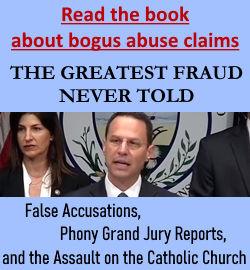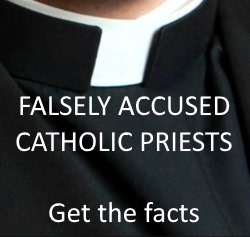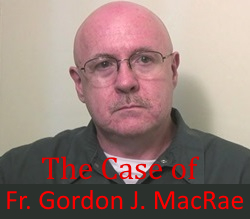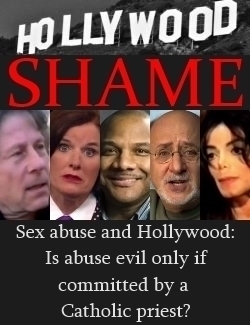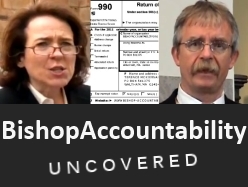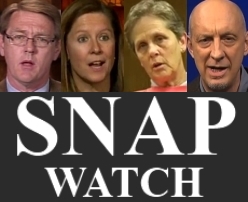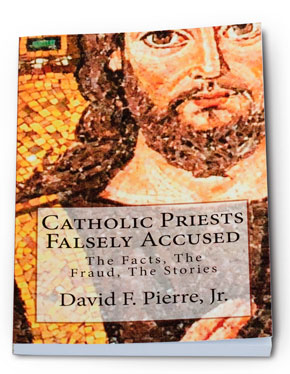Is the Los Angeles Times "piling on" when it comes to covering sex abuse by Christians? Have they misled their readers again?
In the front section of today's Los Angeles Times (Tuesday, September 5, 2006) is an article, "Sex Charges Shadow a Local Curiosity in Texas: Five monks at the Christ of the Hills Monastery are accused of abusing boys. Police also say the church's famous crying icon was 'a scam'" by Times staffer Lianne Hart. The piece is accompanied by three color photos and a small map of Texas (to illustrate the location of the story, Blanco, Texas (population 1505)).
In a large color photo above the article is a man dressed in black, as a priest, surrounded by several relics and icons depicting Jesus and other Christian imagery. The caption of the photo reads, "Caretaker: Christ of the Hills Monastery in Blanco, Texas, is empty now. Father Thomas Flower of a San Antonio urban mission says he is looking after the place." Another color photo shows an icon of the Virgin Mary.
"Christ of the Hills," "Monastery," "Father," "urban mission," "monks," "Virgin Mary" … Another example of abuse in the Catholic Church, right? At first glance, it would appear so. But it isn't. Buried more than halfway through the article is the fact that the monastery was affiliated with the Russian Orthodox Church Outside of Russia, and they cut ties with the monks seven years ago. Why are these facts practically hidden in the article? Deception, anyone?
It's difficult to ignore the appearance of an ongoing anti-Catholic and anti-Christian agenda at the Los Angeles Times. The Times coverage of the sex abuse scandal in the Los Angeles archdiocese has been challenged numerous times for inaccuracy and distortion. (Check out LA-Clergy cases.com for several examples.) The Catholic League has found several instances of Catholic bashing at the Times. In addition, here at NewsBusters, we've posted several stories that point to an anti-Catholic and/or anti-Christian agenda at the paper (here, here, here, and here are just a few examples).
Also witness: On November 19, 2005, the Los Angeles Times devoted much of the top of its front page, several photos, and a very generous 3805 words to instances of clerical abuse three decades ago in two remote villages in Alaska. As with all stories of abuse, it was a sad, angering, and tragic story. But what about proportionality? Alaska? Here's what I mean:
Last month, a substitute teacher who worked in 13 Southern California school districts reportedly told police he molested between 100 and 200 girls. Here is a story in the paper's backyard, yet the Los Angeles Times reported the story (August 5, 2006) on page B3 with 723 words, less than one fifth of the word total of the story thousands of miles away and decades ago in Alaska. (And, yes, it was also fewer words than we had about Texas today.)
"Why Haven't Teachers Received Same Scrutiny As Catholic Priests?" I'm not the only one asking. Tom Hoopes at National Catholic Register and National Review Online is asking also. He's right on (bold mine):
Any institution that has allowed children to be harmed by predators deserves to be taken to task for it. No institution should get a pass. And no profession should get a pass. Not preachers, not priests — not even teachers.
Especially not teachers. And yet …
Consider the statistics: In accordance with a requirement of President Bush’s No Child Left Behind Act, in 2002 the Department of Education carried out a study of sexual abuse in the school system.
Hofstra University researcher Charol Shakeshaft looked into the problem, and the first thing that came to her mind when Education Week reported on the study were the daily headlines about the Catholic Church.
“[T]hink the Catholic Church has a problem?” she said. “The physical sexual abuse of students in schools is likely more than 100 times the abuse by priests.”
"More than 100 times"?!
In addition to Hoopes' excellent piece, check out "Abuse cover-up in schools seen as church's deep pockets targeted" by Wayne Laugesen (National Catholic Register).
Proportionate reporting at the Los Angeles Times? No way.
